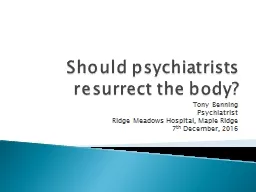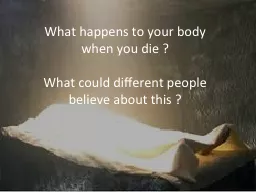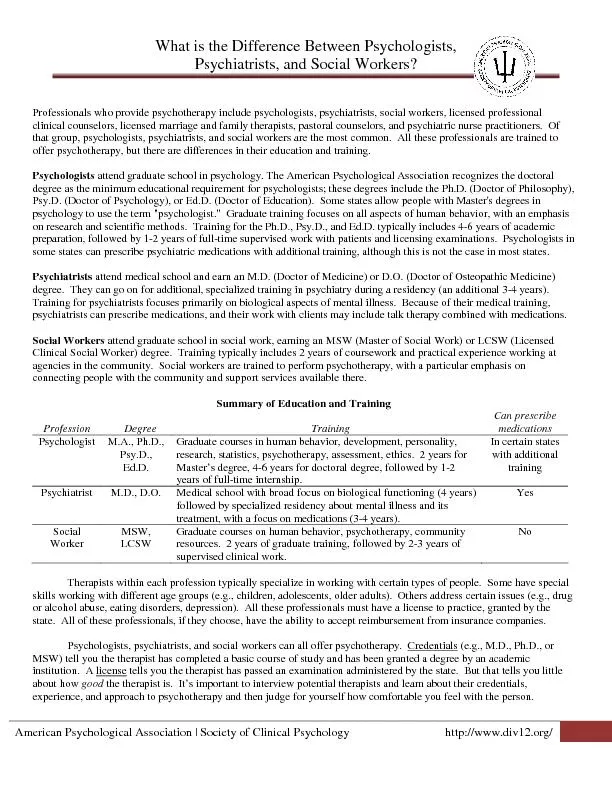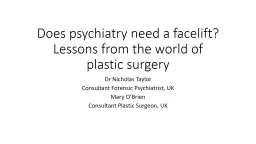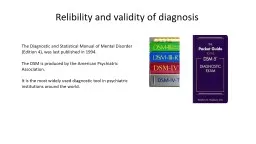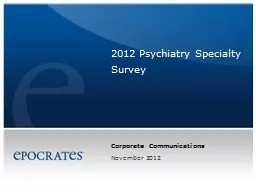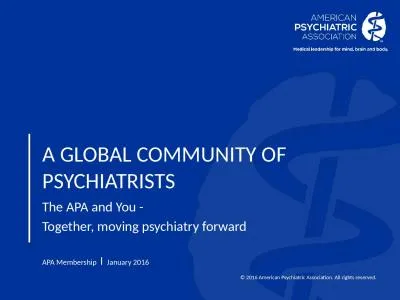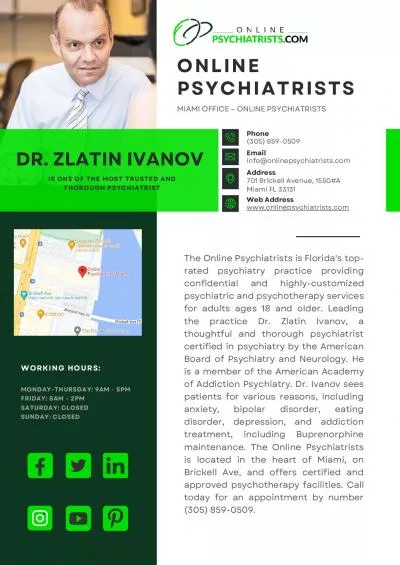PPT-Should psychiatrists resurrect the body?
Author : calandra-battersby | Published Date : 2020-04-03
Tony Benning Psychiatrist Ridge Meadows Hospital Maple Ridge 7 th December 2016 To appreciate that a broad range of mindbody interactions are relevant to psychiatry
Presentation Embed Code
Download Presentation
Download Presentation The PPT/PDF document " Should psychiatrists resurrect the body..." is the property of its rightful owner. Permission is granted to download and print the materials on this website for personal, non-commercial use only, and to display it on your personal computer provided you do not modify the materials and that you retain all copyright notices contained in the materials. By downloading content from our website, you accept the terms of this agreement.
Should psychiatrists resurrect the body?: Transcript
Download Rules Of Document
" Should psychiatrists resurrect the body?"The content belongs to its owner. You may download and print it for personal use, without modification, and keep all copyright notices. By downloading, you agree to these terms.
Related Documents

